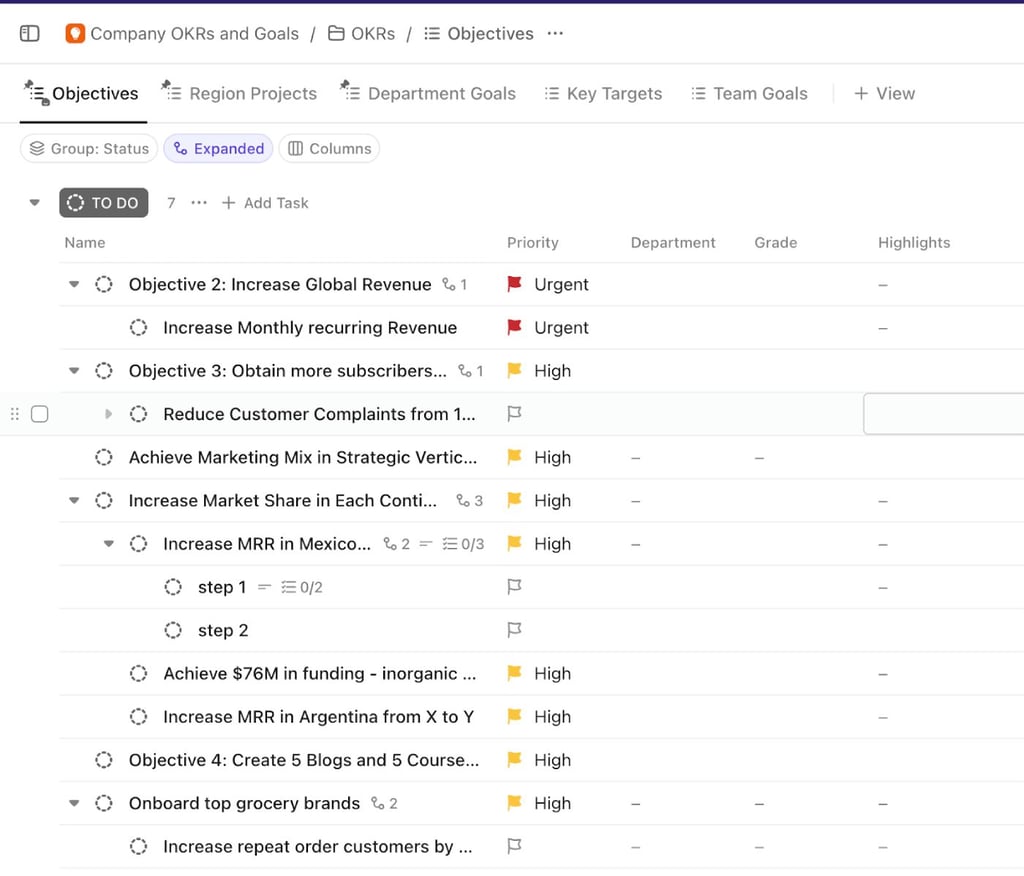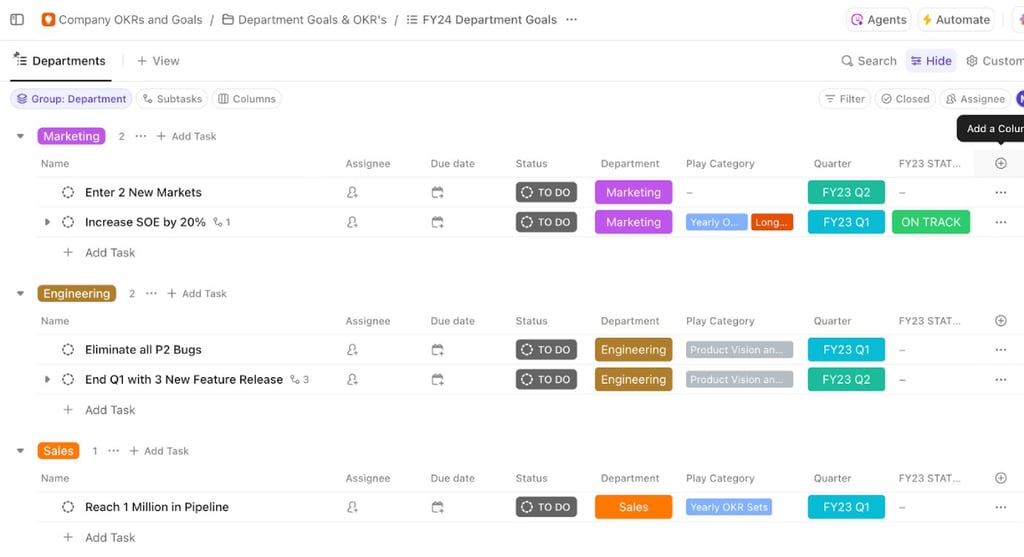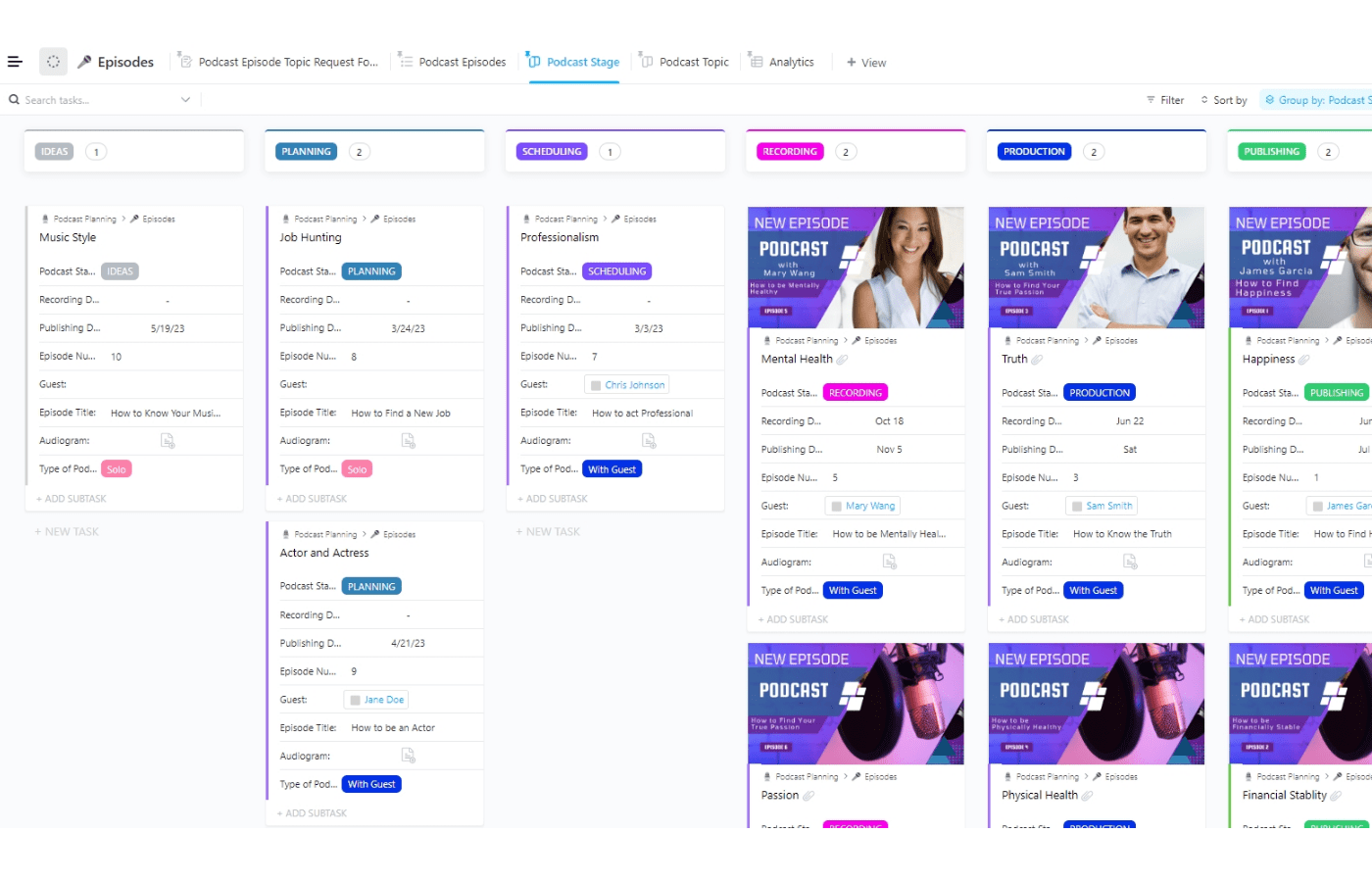In my years of experience working in marketing, I’ve learned that the success of a campaign depends on how well a team organizes and executes that idea across different tasks. For this, I use a marketing strategy template to give structure to my campaigns, especially when timelines and deliverables start overlapping.
In this article, I want to share some of the marketing strategy templates I find most useful for different types of campaigns. Each one offers a slightly different structure depending on whether you’re launching a new product, planning a content calendar, or managing an ad spend. These templates can organize everything from timelines and approvals to budget and performance metrics — all in one place.
Why project managers need marketing strategy templates
Working with project managers over the years, I’ve seen many kick off a major project by creating an outline of a marketing strategy filled with tasks, milestones, and deadlines. It looks like a tidy way to spread the work around, but a marketing strategy template can offer more than just structure. It can drive clarity and measurable results across every phase. Here are the key reasons why it’s a smart move for any project manager.
- Allows you to kickstart planning without starting from scratch: When you start with a ready-made template, you jump straight into outlining deliverables instead of drafting everything from scratch. Each core activity and checkpoint are already baked into the framework, which saves hours during the planning stage. It also reduces the risk of skipping essential steps since the template prompts you to fill in every critical detail.
- Protects projects from costly errors: A 2023 study found that 94% of business spreadsheets contain errors, which can lead to costly mistakes and flawed decision-making. Relying on spreadsheets alone invites trouble because they’re prone to hiding errors that skew budgets and timelines. By shifting to purpose-built templates, you lock in version control and data accuracy and spend less time hunting for mistakes and more time moving the project forward with confidence.
- Keeps teams and stakeholders in the loop: Poor communication during a project can have serious consequences; as a matter of fact, 68% of customers have switched vendors for this reason. Templates solve this by standardizing how updates and reports are shared, so stakeholders always know when to expect updates and how to read them. Internally, a shared template builds ownership because everyone can trace progress against the same set of checkpoints.
- Builds smarter projects over time: Each time you wrap up a project, it’s easy to refine the template with lessons learned from past projects. Over time, this document raises the bar for every team that uses it, spreading know-how without lengthy training sessions. This continuous improvement process ensures every new project gets more consistent and efficient than the last.
Key features to look for in a marketing strategy template
Choosing the right marketing strategy template comes down to more than just picking a pretty layout. You need features that align with your goals and the complexity of your campaign. Below, we created a table to identify which specific features you need depending on the campaign you handle.
| Campaign type | Template features to look for | Why they matter |
|---|---|---|
| Product launch | Timeline builder (e.g., Gantt chart), stakeholder register, risk register, budget planner, communication plan | Launches involve high coordination across teams. You need structure to manage tasks, risks, and timing. |
| Recurring content campaign | Content calendar, performance tracking section, audience segments, messaging template | These campaigns are ongoing but low-risk, so you want a lightweight, repeatable framework. |
| Seasonal promotions | Start/end date fields, durations, asset production tracker, approval workflow, checklist for marketing channels | With fixed dates and fast turnarounds, these features allow you to move quickly without missing a detail. |
| Multi-channel brand campaign | Channel-specific deliverables list, centralized messaging doc, KPI dashboard, team assignments | These campaigns span multiple platforms. Your template should coordinate assets and roles. |
| Inbound/lead gen campaign | Funnel stage alignment, lead scoring criteria, content offers tracker, follow-up schedule | For lead-focused campaigns, templates should map content to funnel stages and track ROI. |
Marketing strategy templates come with different features depending on the type and scope of the campaign you’re planning. Still, these templates share a set of core features that marketers rely on across nearly every project. Here are the ones worth looking for:
- Timeline view: A visual timeline maps out an entire campaign from planning to execution, so it’s easier to track progress and hit deadlines. This is especially useful for mapping projects across teams and keeping everyone aware of upcoming tasks.
- Budget tracking: Managing your budget effectively is just as important as meeting your marketing objectives, and a built-in budget tracker lets you stay in control from start to finish. Yet research shows that only 41% of projects are completed within budget, highlighting how common financial overruns can be. The right template lets you allocate costs by channel and adjust quickly when priorities shift.
- AI and automation: Modern marketing templates often integrate with AI tools to generate content ideas and summarize project status. In fact, one in two writers now use AI tools to boost the performance of their content, which shows how intelligent tools can give your campaign a competitive edge.
- Task dependencies and milestones: This feature lets you link tasks that must be completed in sequence and set milestones to measure progress. They’re critical for staying on schedule and knowing exactly where bottlenecks may occur during execution.
- Approval workflow: An embedded approval process prevents roadblocks by consolidating feedback and version control. It allows creative assets to move through the pipeline faster, especially when multiple stakeholders are involved.
- Template flexibility for campaign types: Ideally, marketing strategy templates shouldn’t be a one-size-fits-all because not every marketing campaign requires the same level of planning or detail. Your strategy template needs to be flexible based on the complexity of work, whether you’re launching a new product or publishing weekly content. When templates are customizable, your team can reuse them across different campaigns without wasting time redesigning the format. This flexibility not only saves time but also ensures consistency and structure, regardless of how simple or complex the initiative is.
Top marketing strategy templates for PMs
With the right marketing strategy template, you can streamline planning and keep your campaign on track from kickoff to performance review. Choosing marketing project management software like ClickUp, Asana, and Notion gives you flexible, ready-to-use templates to assist project managers with their campaign needs in one place.
| Best for | Key features | Free plan | |
|---|---|---|---|
 | Goal alignment through objectives and key results (OKR) | • Custom statuses • Submission board • Commenting feature | ✓ |
 | Milestone planning | • Dependencies • Milestones • Timeline view | ✓ |
 | Budgeting + project tracking | • Gantt chart • Automatic reminders • Custom automations | ✓ |
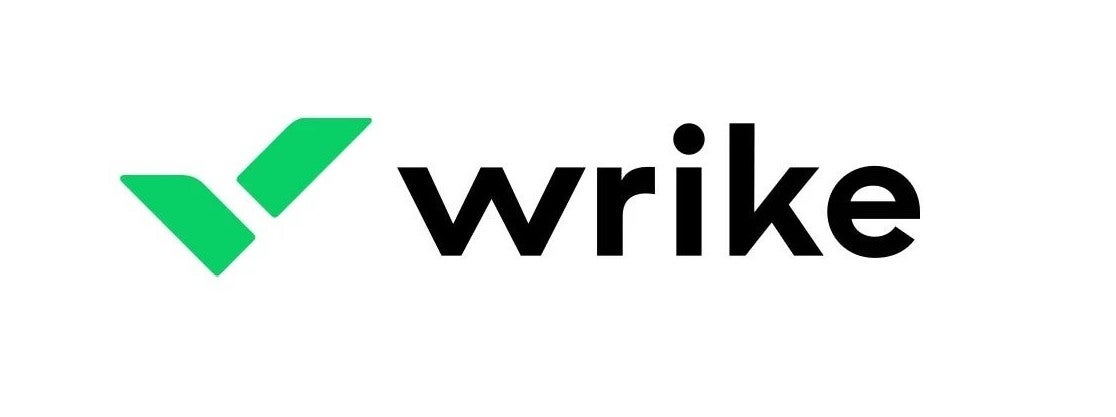 | Go-to-market launches | • Workload views • Request form • Proofing and approval | ✓ |
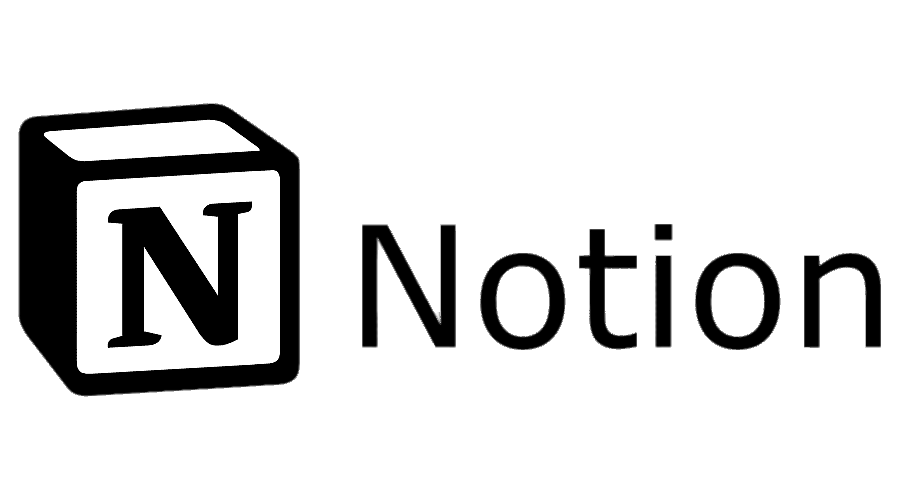 | Influence campaign strategy | • Post monitoring • Automatic categorization • Collaboration overview | ✓ |
 | Custom marketing operations | • Campaign overview • Content pipeline • Task list | ✓ |
 | Social media campaign strategy | • Lead tracking • File storage • Social media metrics | ✓ |
The best marketing strategy templates for project management
Choosing the right template often comes down to which platform supports your campaign workflow and planning style. Below, we’ve highlighted top tools like ClickUp for goal alignment, Asana for milestone planning, and monday.com for combining budget tracking with project visibility.
1. ClickUp – Best for goal alignment (OKRs)
When I’m managing a strategic campaign with multiple objectives, I use ClickUp’s OKR (objectives and key results) marketing strategy template to keep everything aligned from the top down. ClickUp’s OKR marketing strategy template gives you a high-level view of objectives while tying each one to different tasks across departments.
The interface makes it easy to prioritize goals like revenue growth or market expansion so you can align marketing work directly with company-wide targets. I like how I can link tasks to performance outcomes, especially with urgency flags and nested tasks that break down complex goals. It’s a strong fit if your campaign success depends on measurable impact and top-down visibility.
2. Asana – Best for milestone planning
Asana helps me bring structure to marketing campaign planning by letting me map out milestones using its free marketing strategy template. I can see how tasks like ad placements and design updates overlap, which can prevent scheduling conflicts.
I appreciate the flexibility to switch between views like Kanban, checklist, and calendar. This makes it easier for me to look at my campaign plan from different angles and manage both the big picture and the day-to-day tasks.
I also like being able to assign due dates on tasks and set dependencies, so a task won’t move forward until another is complete. When I’m working closely with stakeholders, Asana lets me share updates in real-time. I can build automated dashboards that display real-time campaign progress, which keeps everyone informed without the need for constant check-ins.
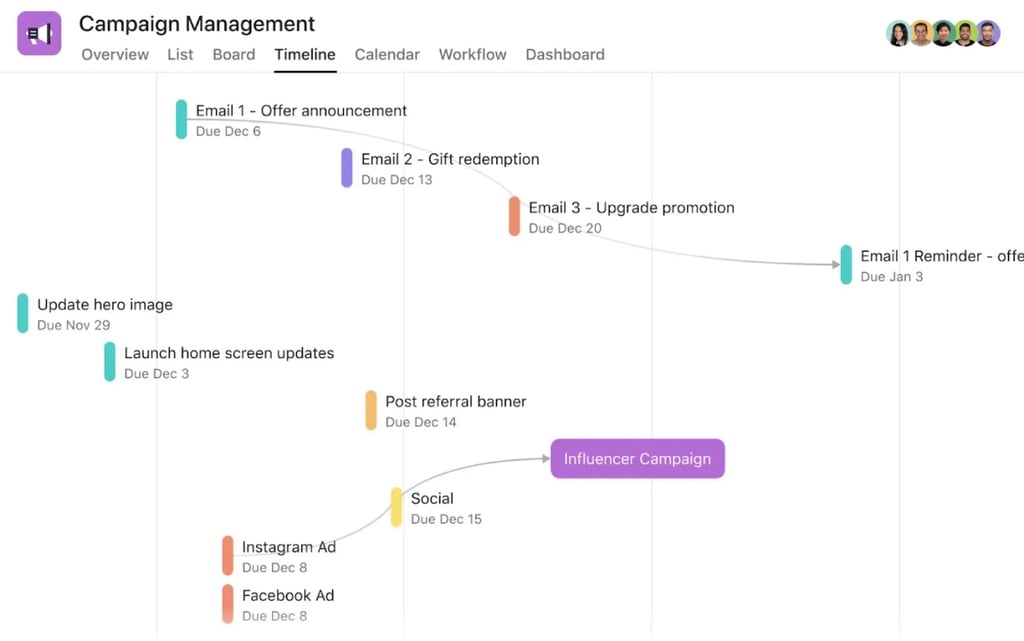
3. monday.com – Best for budgeting + project tracking
When I’m managing both the budget and delivery timelines, monday.com lets me monitor everything in one place. I can check if our marketing budget is aligned with our spending goals for a specific period, while allowing me to stay on top of financial targets without jumping between spreadsheets or reports.
monday.com’s template for marketing strategy gives me a clear way to map out overlapping projects by phase. If something shifts, I can quickly adjust timelines and dependencies. I also like that I can visualize spending by quarter and track how much budget is left, which makes it easy to spot if I’ve gone over. Since I’m juggling a lot of moving parts, the automatic reminders help keep me aware of any potential overspending.
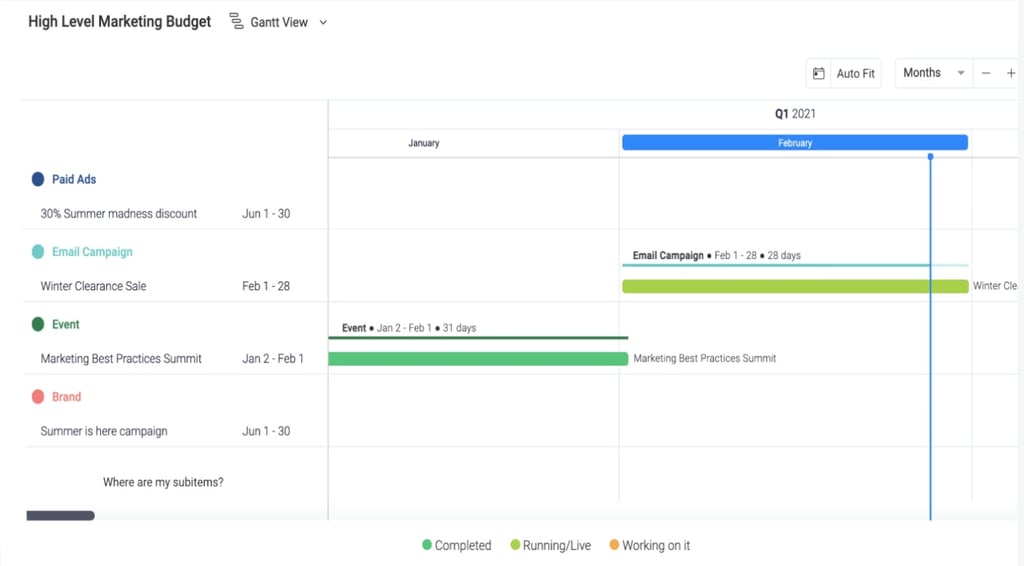
4. Wrike – Best for go-to-market project launches
I turn to Wrike’s sample marketing strategy template when launching a new product line that includes multiple marketing efforts. The built-in request form collects essential campaign details like the estimated budget and launch timeline, while the proofing tools allow teammates to leave feedback and route assets for stakeholder approval.
The Gantt chart gives me a full view of each campaign phase, from early planning through post-launch. I also like the ability to customize the fields and item types to tailor the workspace to fit the specific needs of each campaign. What I find most useful is the productivity dashboard, where I can track all my tasks in one place, store key documents, and keep a record of completed work.
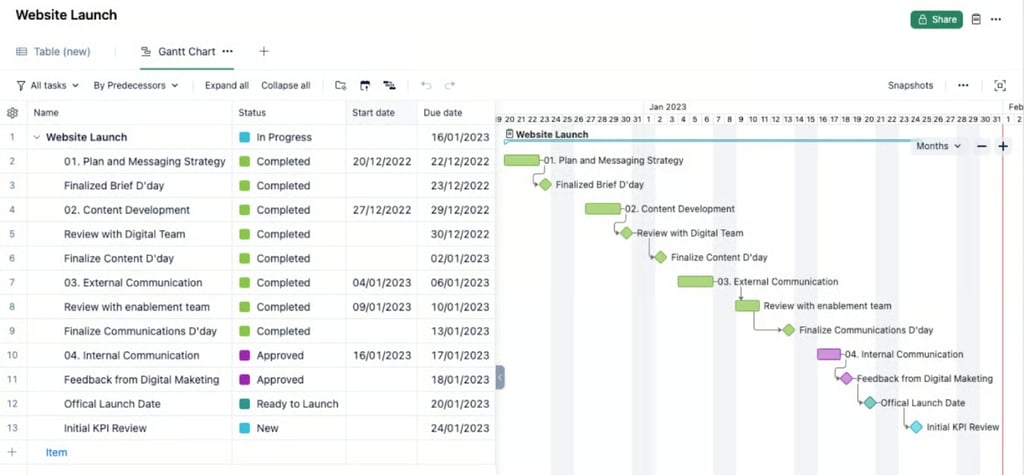
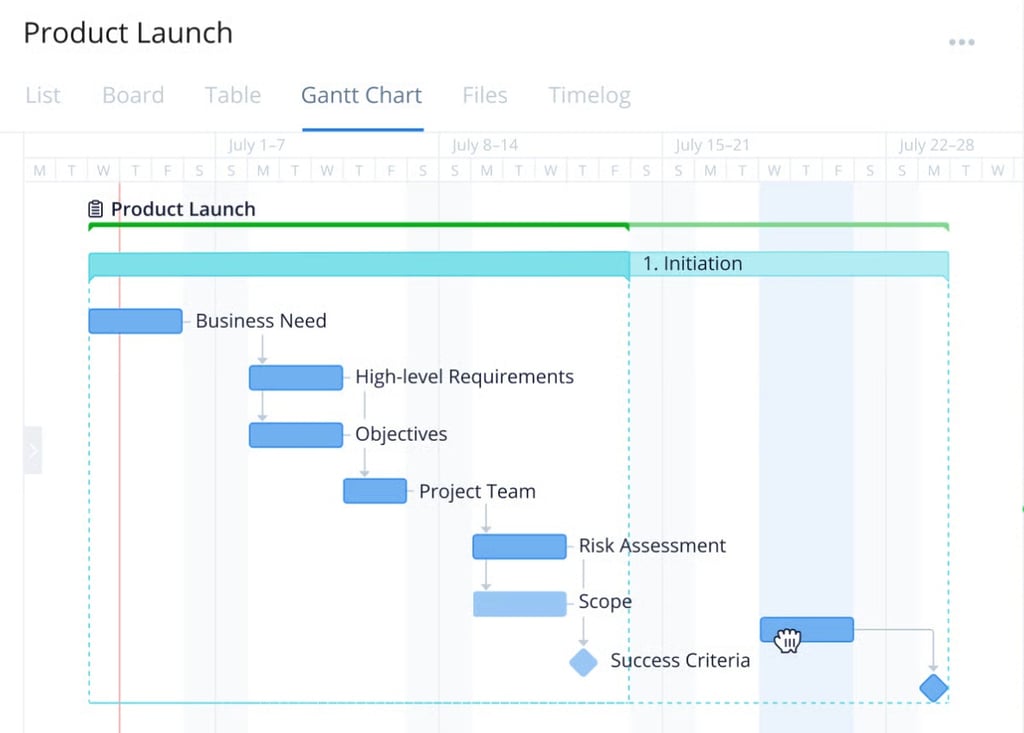
5. Notion – Best for influencer campaign strategy
When I’m managing influencer campaigns, I rely on Notion to organize everything from audience targeting to collaboration status. It helps me group influencers by gender, niche, age group, and pricing so I can make fast, informed decisions for each campaign.
What I find especially helpful is the integrated post tracking and engagement data, which gives me real-time feedback on campaign performance. I also get access to the Influencer 101 course, a free built-in guide within Notion users can refer to whenever they need a refresher on strategy or selection.
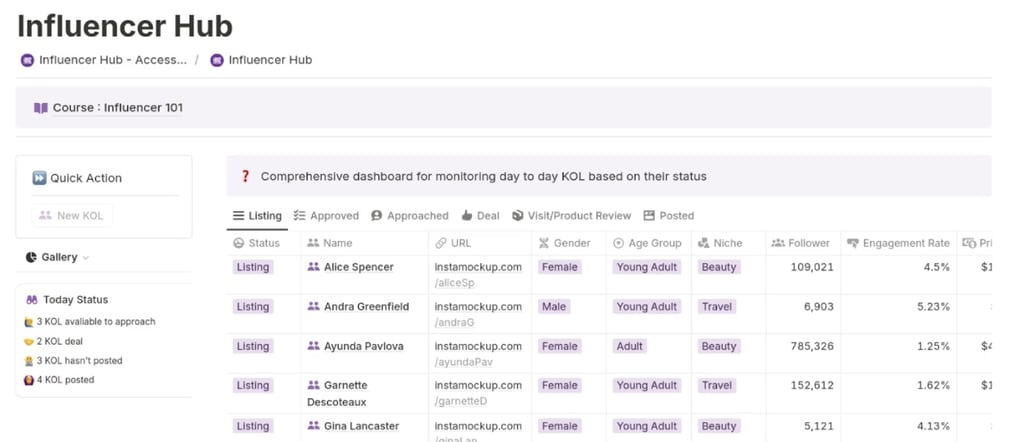
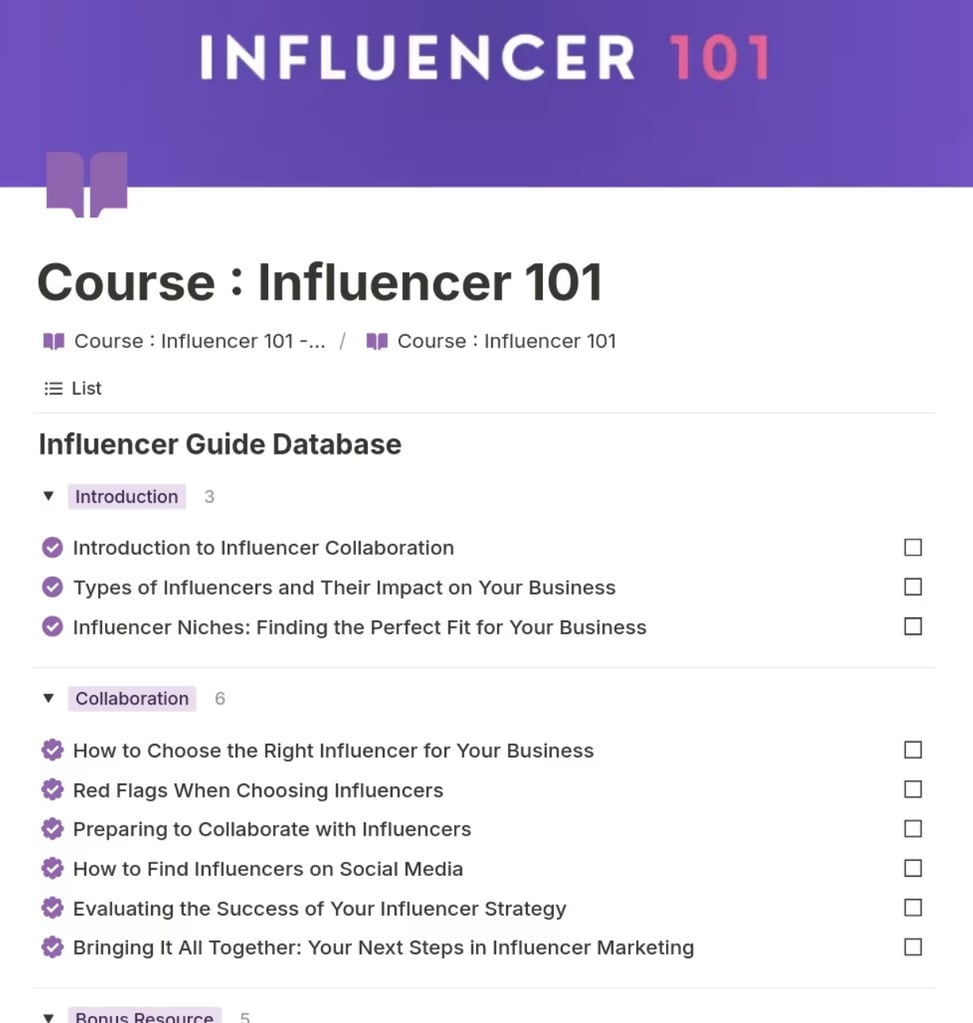
6. Airtable – Best for custom marketing operations
When I’m managing multiple campaigns with different goals, Airtable helps me connect everything clearly, from content types to campaign metrics. I can link blog posts, videos, and emails to specific goals like brand awareness or lead generation and track their progress in one view.
This unique format for marketing strategy shows me exactly how each campaign is performing, which helps me decide what to adjust or prioritize. I also rely on the team directory and task list to coordinate deadlines and assignments.
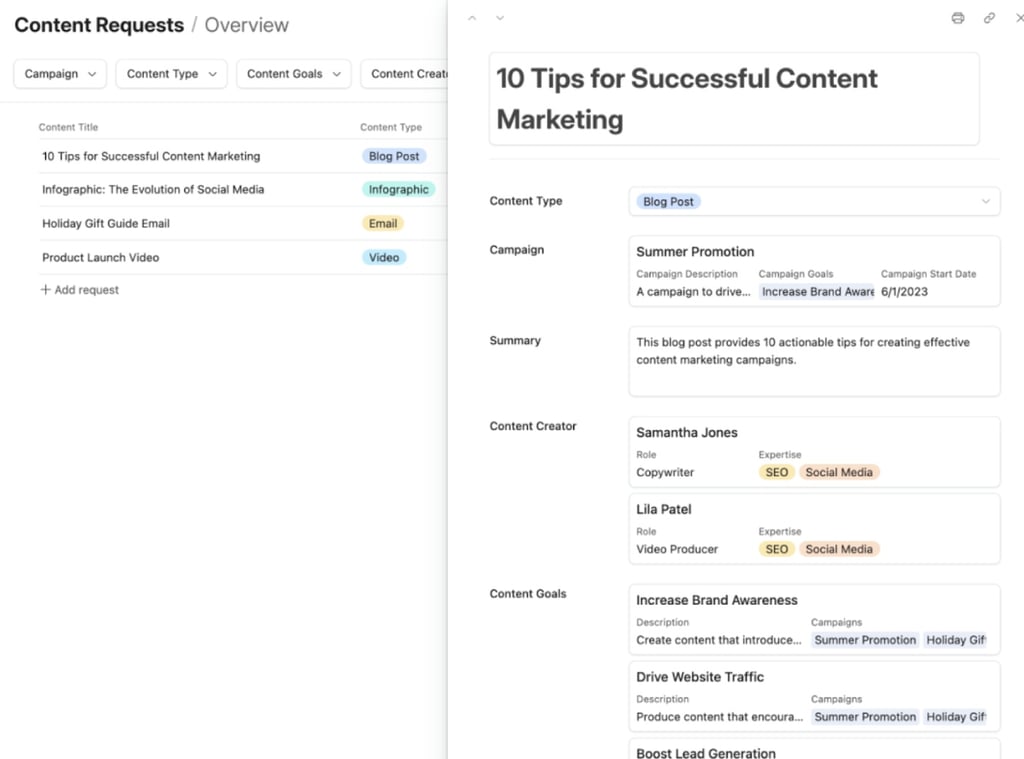
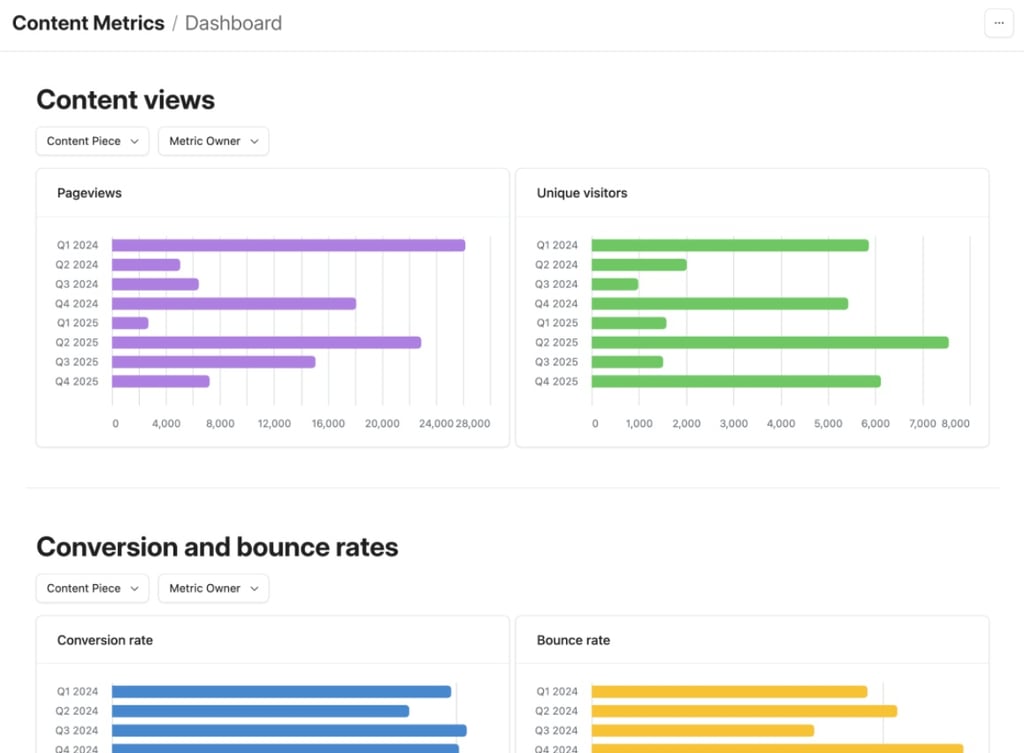
7. Stackby – Best for social media campaign strategy
I use Stackby to manage every aspect of a social media campaign from a single workspace. It allows me to organize content by channel and post type, such as paid, organic, or recurring, while keeping track of performance metrics like likes, shares, impressions, and engagement. I can attach visuals to each post, assign team leads, and update the status to see what’s in progress or already published.
The platform works well when I’m planning cross-platform campaigns with different objectives for each channel. I can brainstorm new post ideas with the team and adjust campaign strategies using real-time data. Having everything in one place gives me the visibility I need to make faster, more informed decisions.
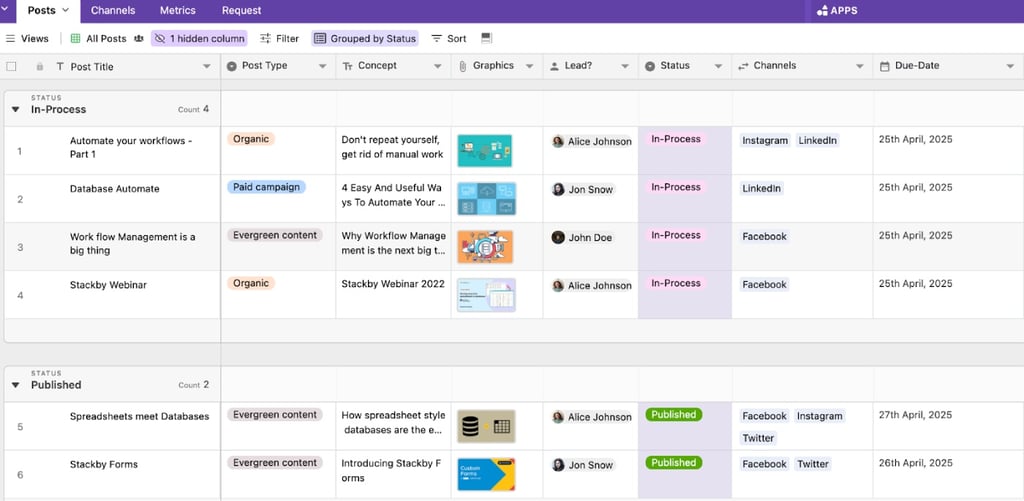
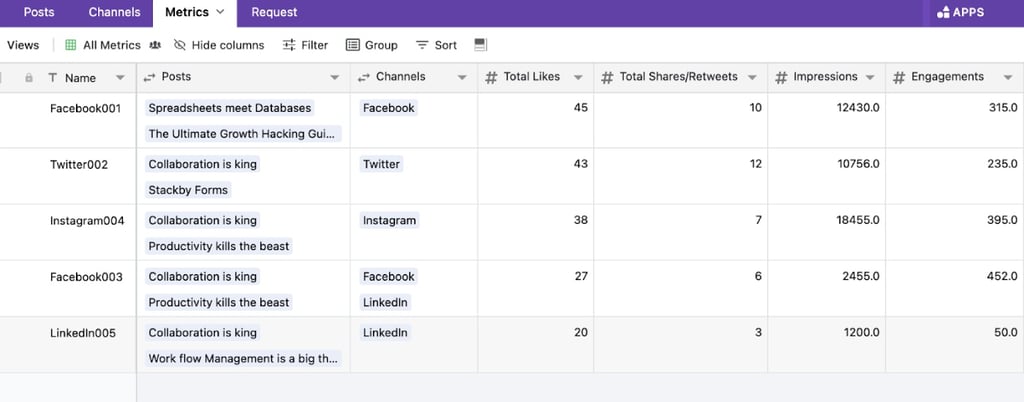
How to choose the right template
Choosing the right project template can save you hours of setup and help your campaigns launch more efficiently. The best fit depends on your goals, team structure, and how you prefer to manage tasks.
- Match the tool to your campaign type: Start by identifying the primary purpose of your campaign, whether it’s a go-to-market launch, influencer outreach, or social media management. Look for templates designed around those use cases so you’re not constantly reinventing with each new project.
- Align features with your workflow style: Some teams need Gantt charts and structured dashboards, while others work better with flexible boards or collaborative documents. The right template should match how you naturally organize work, not force you into a rigid process.
- Factor in team size, budget, and tech stack: Templates that support automation and integrations can reduce manual work for smaller teams or solo marketers. If you’re working within a larger tech ecosystem, make sure the template connects smoothly with the tools your team already uses.
How to implement marketing strategy templates
Implementing a format for marketing strategy takes more than just copying it into your workspace. You’ll get better results when you treat it as a living system tailored to your team’s needs.
1. Customize the template to your team’s workflow. Update labels and fields so they reflect your team’s work structure. This keeps everyone in sync and leads to faster adoption. When your team sees familiar terminology, it’s easier to get buy-in and reduce miscommunication.
2. Guide stakeholders on usage. Make sure everyone involved in the campaign knows how to navigate and contribute to the template. A short live demo or recorded training can go a long way in building consistency. Clear expectations from the start prevent delays or missed updates later on.
3. Automate reporting and check-ins. Use built-in automation features to schedule recurring updates, set reminders, or generate reports. This keeps progress visible without extra work and informs stakeholders right away without needing to request regular status updates.
Common pitfalls to avoid
Even with the best marketing strategy format, it’s easy to fall into habits that slow down execution. Avoiding a few common missteps can make your campaigns run more smoothly and produce better results.
- Treating templates as static docs: Templates are meant to evolve as your campaign progresses, not sit untouched after kickoff. If you’re only filling in a template once and never revisiting it, your strategy will likely fall out of sync the next time you implement it. Make it a habit to review and update key sections weekly so the team always works with current priorities.
- Over-engineering the strategy phase: It’s tempting to map out every possible scenario or build an overly complex plan. In my experience, too much upfront planning delays the start of real work and creates friction during implementation. Keep the structure lean enough to stay agile, but make sure it is organized enough to keep your team aligned and moving forward.
Failing to connect strategy to task management: A well-documented strategy means nothing if it’s not linked to the day-to-day tasks. You don’t want to build a strategic plan that stalls because no one is assigned to carry it forward. Make sure every goal or phase in your template ties directly to tasks, timelines, and team responsibilities.
